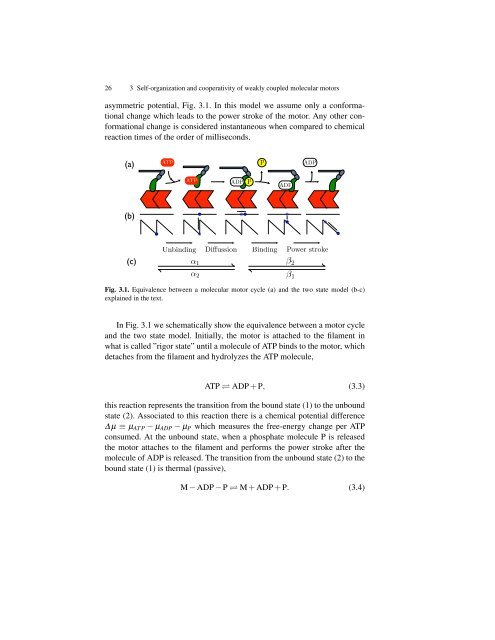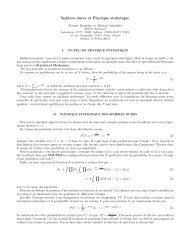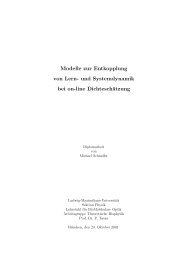Thesis (pdf) - Espci
Thesis (pdf) - Espci
Thesis (pdf) - Espci
Create successful ePaper yourself
Turn your PDF publications into a flip-book with our unique Google optimized e-Paper software.
26 3 Self-organization and cooperativity of weakly coupled molecular motors<br />
asymmetric potential, Fig. 3.1. In this model we assume only a conformational<br />
change which leads to the power stroke of the motor. Any other conformational<br />
change is considered instantaneous when compared to chemical<br />
reaction times of the order of milliseconds.<br />
(a)<br />
(b)<br />
ATP<br />
ATP ADP P<br />
P ADP<br />
ADP<br />
Unbinding Diffussion Binding Power stroke<br />
(c) α1 β2<br />
α2<br />
Fig. 3.1. Equivalence between a molecular motor cycle (a) and the two state model (b-c)<br />
explained in the text.<br />
In Fig. 3.1 we schematically show the equivalence between a motor cycle<br />
and the two state model. Initially, the motor is attached to the filament in<br />
what is called ”rigor state” until a molecule of ATP binds to the motor, which<br />
detaches from the filament and hydrolyzes the ATP molecule,<br />
β1<br />
ATP ⇋ ADP + P, (3.3)<br />
this reaction represents the transition from the bound state (1) to the unbound<br />
state (2). Associated to this reaction there is a chemical potential difference<br />
∆µ ≡ µAT P − µADP − µP which measures the free-energy change per ATP<br />
consumed. At the unbound state, when a phosphate molecule P is released<br />
the motor attaches to the filament and performs the power stroke after the<br />
molecule of ADP is released. The transition from the unbound state (2) to the<br />
bound state (1) is thermal (passive),<br />
M − ADP − P ⇋ M + ADP + P. (3.4)




